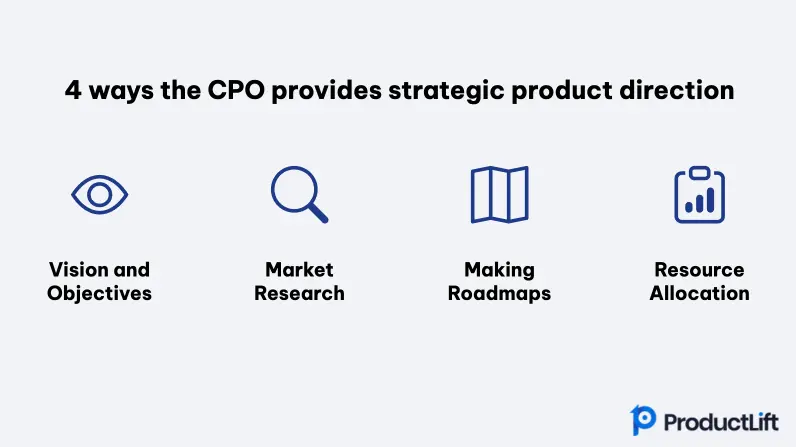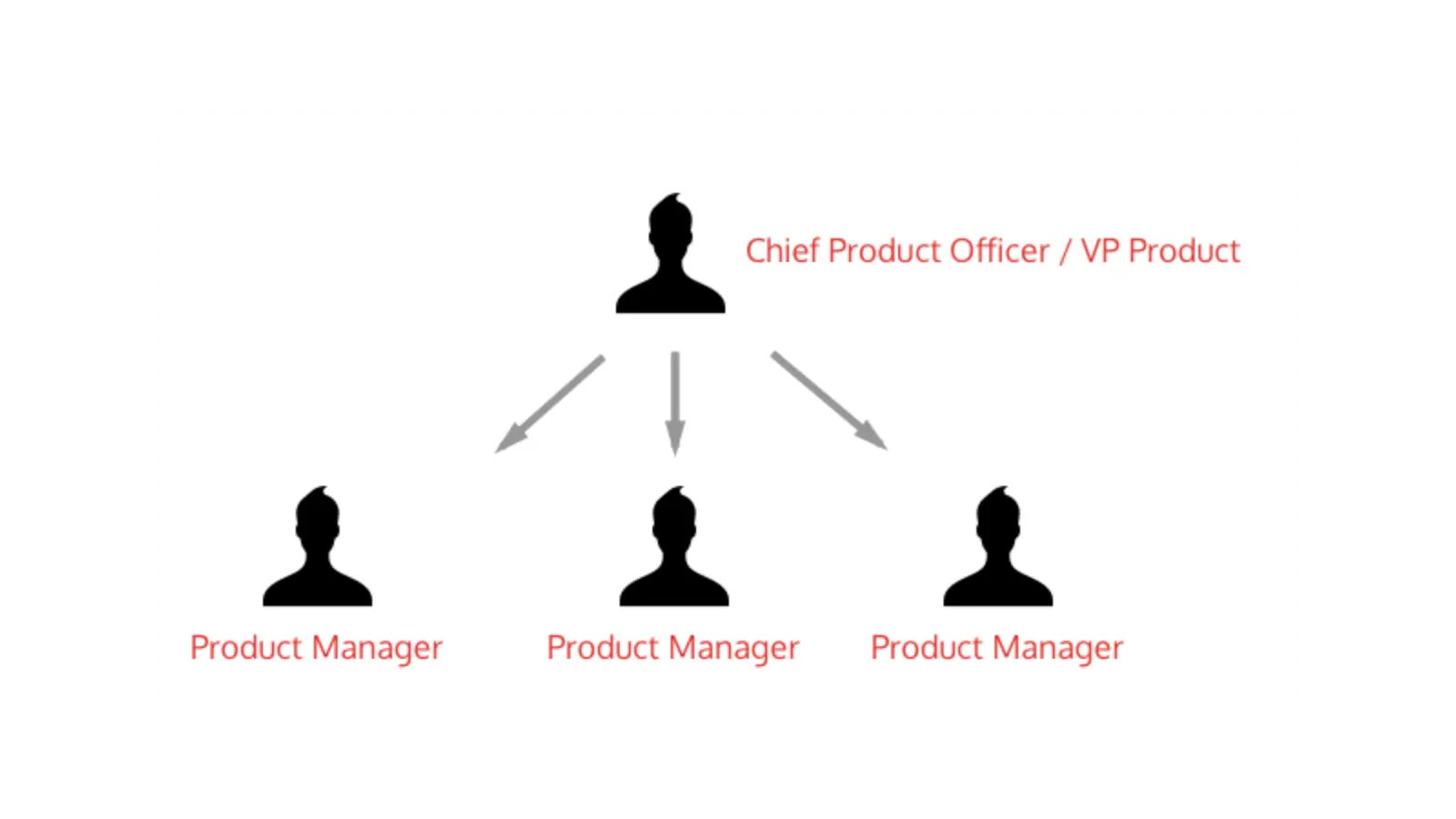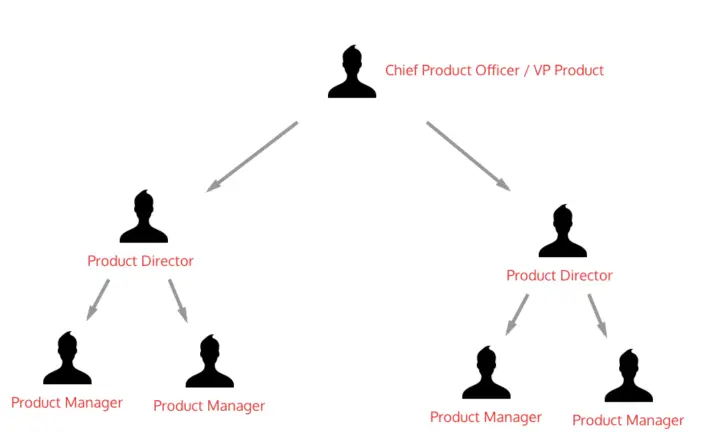What is a CPO or Chief Product Officer?

Ruben Buijs
Updated on Nov 19, 2025
In the tech industry, the role of Chief Product Officer (CPO) is becoming increasingly important. In this article, I break down what a CPO does, why they're essential to a company, and how they differ from other product leadership roles. I'll also cover average salaries and the typical career path to becoming a CPO.
Summary
Here's a quick summary of the key points covered in this blog post:
-
A CPO is a top boss in charge of everything about a product in a company.
-
They're the brains behind the product vision and the roadmap to success.
-
To become a CPO, you usually need to have a good amount of experience managing products and understanding business.
-
Their main goals? Dream up where the product's headed, lead the folks who build it, and keep an eye on how well it's doing out in the world.
Table of contents
- Summary
- Defining the CPO Role
- Key Responsibilities of a CPO
- The CPO in the org chart
- CPO vs. Head of Product: Distinguishing the Roles
- The Earnings of a CPO: Average Salary
- CPO Key Success Indicators
- Career Path: Steps to Becoming a CPO
- Conclusion
- FAQ
Defining the CPO Role
I'd say a CPO or VP of Product is like the quarterback for a company's product team.
They work hand in hand with the big shots - think CEO and CTO - to make sure the product game plan fits the company's goals.
They're the ones calling the plays for the product managers and the marketing gurus, making sure everyone's pushing in the same direction.
Key Responsibilities of a CPO
The Chief Product Officer is a c-level executive who provides strategic direction for the product portfolio, including product development and lifecycle management.
The CPO's primary role is to ensure that the company’s products provide value to customers and align with the company's business strategy.
Vision and Objectives
The CPO is often responsible for establishing a clear product vision that aligns with the company's broader business goals. This vision serves as the North Star for the product team, guiding decisions on what features to build, what markets to enter, and how to allocate resources.
Market Research
To provide meaningful direction, a CPO spends time understanding market trends, customer needs, and competitive landscapes. They may use a variety of tools and methodologies, such as customer interviews, surveys, and data analytics, to inform their strategies.
Roadmapping
The CPO usually owns the product roadmap, which outlines the timeline for feature releases, new products, and other milestones. The roadmap is a dynamic document that gets updated to reflect shifting priorities and new opportunities.
Resource Allocation
The CPO is usually involved in decisions about how to allocate resources—both human and financial—to different product initiatives. They'll often prioritize projects that align closely with strategic goals, even if that means deprioritizing others.
The CPO in the org chart
In a medium-sized product organization, the structure of the product team might look something like this:
For larger organizations, the complexity increases:
In such sizable settings, each principal product or product line is typically overseen by a Product Director who then reports to the CPO.
CPO vs. Head of Product: Distinguishing the Roles
While the titles may sound similar, the CPO and the Head of Product have distinct roles.
A CPO, being an executive responsible for the entire product organization, oversees the overall product strategy, while also being involved in broader company goals.
The Head of Product is typically focuses on a specific product or service, working closely with product managers and teams to execute the product roadmap.
The Earnings of a CPO: Average Salary
While the average salary of a Chief Product Officer can vary depending on the size and industry of the company, it's safe to say that it is a high-ranking, well-compensated role.
-
As of September 25, 2023, the typical salary for a Chief Product Officer in the U.S. hovers around $275,101. However, this can vary, generally falling within a range of $249,401 to $299,501.
-
For startups and smaller companies, a CPO may earn towards the lower end of that range.
-
There is a steep difference with the average salary in other countries like for example The Netherlands, where the average is around €108,090 per year
-
CPOs at larger or more established companies can command salaries well above the average, potentially even reaching into the seven figures when stock options and bonuses are included.
CPO Key Success Indicators
The Key Performance Indicators (KPIs) for a Chief Product Officer often include metrics related to product performance, customer experience, and business growth.
The CPO is also accountable for the performance of the product team and the achievement of product-related KPIs.
Here are five key KPIs a Chief Product Officer can focus on:
-
Monthly Active Users (MAU): A measure of user engagement, often crucial for products that rely on a large user base.
-
Churn Rate: The percentage of customers who discontinue using the product during a specific timeframe, indicative of retention issues.
-
Revenue Growth Rate: Measures the speed at which product-related revenue is increasing, critical for assessing financial performance.
-
Customer Satisfaction Score (CSAT): A direct metric for customer happiness, usually collected through post-interaction surveys.
-
Feature Adoption Rate: Tracks how many users are using a new feature, providing insights into the product's usability and the effectiveness of its rollout.
Career Path: Steps to Becoming a CPO
To become a Chief Product Officer (CPO), the journey can be both challenging and rewarding.
Here's a career path that I typically see:
-
Education: Begin with a strong educational foundation in business, marketing, or a related field. Many CPOs have an MBA or other advanced degrees that focus on business strategy and management.
-
Entry-Level Position: Start in an entry-level product management or business analyst role. This is where you'll learn the basics of the product lifecycle, customer research, and business planning.
-
Mid-Level Management: Progress to roles like Senior Product Manager or Product Owner, where you’ll take on more responsibility, manage larger projects, and start to build a vision for product lines.
-
Senior Leadership: Transition into senior leadership roles such as Director of Product Management or VP of Product. In these roles, you'll develop strategic thinking, manage multiple product lines, and influence company direction.
-
Cross-Functional Experience: Gain experience in related areas like UX/UI, marketing, and sales to understand how various departments work together to bring a product to market.
-
Executive Presence: Cultivate strong leadership and communication skills to inspire teams, drive product vision, and present strategies to stakeholders and the board.
-
Become a CPO 🚀: Step into the CPO role, where you'll oversee product strategy, innovation, and the overall product management process, guiding the company's product vision to meet business goals.
Conclusion
In conclusion, the Chief Product Officer (CPO) is a pivotal role that drives the strategic direction and overall success of a company's product portfolio.
Their extensive responsibilities span setting product vision and strategy, managing the product lifecycle, and fostering cross-departmental collaboration.
With a deep understanding of market trends, business strategy, and customer needs, CPOs are indispensable leaders in the world of product management.
FAQ
How does a CPO Interact with the Organizational Structure?
The CPO interacts closely with the organizational structure, working in tandem with other executives like the CTO, CEO, and VP of Product.
The CPO provides direction for the product department, which includes product managers, the head of product analytics, and the director of product marketing.
They ensure the product's vision and strategy align with the company's overall goals.
How does a CPO influence Product Management?
A CPO influences product management by setting the strategic product direction and making key product decisions.
The CPO leads a product team and works closely with the Head of Product and Director of Product Marketing to ensure the product aligns with the company's vision and market needs.
The CPO's role in influencing product management extends across multiple departments, including UX, product analytics, and product innovation.











